Content
- 1 Fertilizers for cucumbers in the open field
- 2 Autumn preparation for growing cucumbers in the open field
- 3 Spring preparation for growing cucumbers in the open field
- 4 We plant cucumbers in the greenhouse
- 5 Features of feeding various types of soil
- 6 Important to remember
- 7 Stages of fertilizing for cucumbers at their summer cottage
- 8 Types of dressings for cucumbers
- 9 Fertilizing cucumbers with mineral fertilizers
- 10 Organic fertilization
- 11 Non-standard ways of feeding cucumbers
- 12 Yeast top dressing: recommendations for gardeners
- 13 The main mistakes of gardeners
- 14 Answers to topical questions of gardeners
.
Cucumber is a tasty and healthy vegetable widely used in salads and preserves. It is classified as a rather capricious agricultural crops, therefore, obtaining a rich harvest requires compliance with several rules for choosing a place for planting and feeding them at various stages of cultivation. The introduction of fertilizers into the soil before planting cucumbers is the key to their rapid growth and active fruiting, therefore, it is worth paying special attention to the preliminary preparation of the soil in the garden allotted for them.
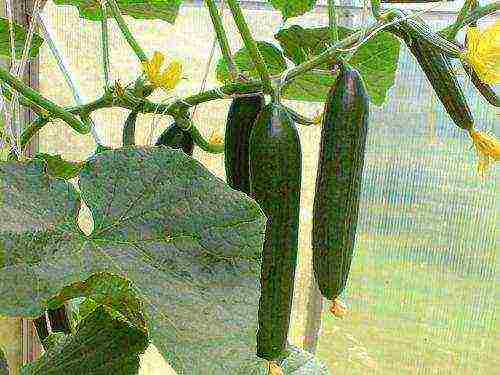
Fertilizing cucumbers before planting allows you to get excellent yields in the future
Autumn preparation for growing cucumbers in the open field
There are different opinions regarding the method of replenishing the land before planting seeds, and each summer resident independently chooses which technologies to use to fertilize the land before planting vegetables. Most gardeners are of the opinion that it is best to fertilize the soil in the area intended for growing cucumbers in the fall, since it will take several months and a large amount of moisture to completely dissolve the mineral mixture used to saturate the soil with nutrients.
Top dressing for cucumber seedlings grown by the open method is prepared taking into account the squaring of the plot, based on the calculation that for each square meter of future beds, 3-4 buckets of ripe manure, 3-4 glasses of wood ash and 80-100 g of nitrophoska are required. In autumn, the mixture is evenly applied to the area, which must be dug up in the spring and covered with a 15-centimeter layer of black soil.

Quail manure is applied to the garden in the fall
Spring preparation for growing cucumbers in the open field
If it was not possible to fertilize the soil in the fall, in the spring, at least a week before planting the seeds, in the place of the future cucumber bed, it is necessary to dig a groove about 40 cm deep, fill it with ripe manure, and cover it with a 16-centimeter layer of fertile soil on top, after which the soil must be leveled, form sides and cover with a thick film.
Only old manure can be added to the soil, since fresh mullein contains highly concentrated urea and nitrogen, which are capable of burning young cucumber sprouts. When fertilizing the soil, it is important to observe the proportions recommended by farmers, since an excessive amount of droppings on the site can provoke the formation of voids in cucumber fruits and a decrease in yield.
Fresh hay, fallen leaves or sawdust are excellent top dressing, which, when planting cucumbers, can replace manure and fully fertilize the earth. Any of these substances is introduced into the prepared groove, compacted and covered with fertile soil, on which it is already possible to form beds.
In cases where it is not possible to fertilize the soil in advance before sowing cucumbers, 3-4 days before planting the seeds, the soil must be sprinkled with ash mixed with superphosphate in the proportion: 2 tablespoons of fertilizer per 1 glass of ash, after which one bucket of humus is applied to the soil and rotten sawdust. Then the treated area is dug up and watered with 3-4 liters of humate solution prepared from 1 tbsp. tablespoons of this fertilizer concentrate and 10 liters. water. This amount of top dressing is enough to process 1 sq. meter of the garden. After all the manipulations, the soil is covered with a film to warm the earth.
In addition to feeding made by the gardeners themselves, ready-made complex fertilizers based on phosphorus and nitrogen, such as ammophos or diammophos, are also used. Due to their high mobility in the soil and easy solubility, phosphorus-nitrogen growth stimulants can be applied immediately before planting cucumbers.
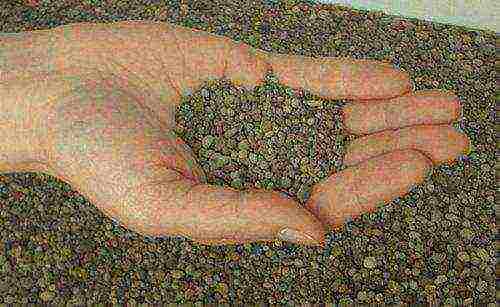
Diammophos is suitable for fertilizing cucumbers before planting
We plant cucumbers in the greenhouse
Most often, cucumber seedlings are planted in greenhouses, which have 4-5 true leaves. Usually, this number of leaves appears in the third week after the seeds are hatched. Growing seedlings includes:
- warming up the seeds;
- moisturizing and fertilizing cucumber seeds;
- cooling;
- introduction of seeds into pots.
Seeds intended for growing seedlings are kept for a month in a warm room at a temperature of at least + 25 ° C, which will allow in the future to get a friendly sprout, earlier fruiting and a minimum amount of barren flowers. Before germination, heated cucumber grains must be placed for an hour in a disinfecting solution made from 100 g of cool water and 30 g of garlic pulp.
After the destruction of pathogenic microbes, the seeds are folded for 12 hours in a tissue flap soaked in a nutrient solution, for the preparation of which you will need 1 tablespoon of water, 1 teaspoon of fine wood ash and the same amount of nitrophosphate.
Then the grains are placed on a damp cloth, where they are kept for 2 days at a temperature of about + 20 ° C. When the seeds are swollen and slightly hatched, they are transferred to the refrigerator for 24 hours. These manipulations allow you to harden future shoots. Note that the seeds of hybrid varieties of cucumbers do not need pre-sowing preparation.
For growing cucumber seedlings, use small containers 10-12 cm high, filled with a nutritious soil mixture. This substance is obtained from 1 part of rotten sawdust, 2 parts of humus and 2 parts of peat. 10 l of the preparation for the soil mixture is fertilized with 1.5 tablespoons of nitrophoska and 2 tablespoons of wood ash. Place 1 sprouted seed in 1 pea. Seedlings are watered at least once a week. The presence of intense lighting is a prerequisite for the normal growth of cucumber seedlings.
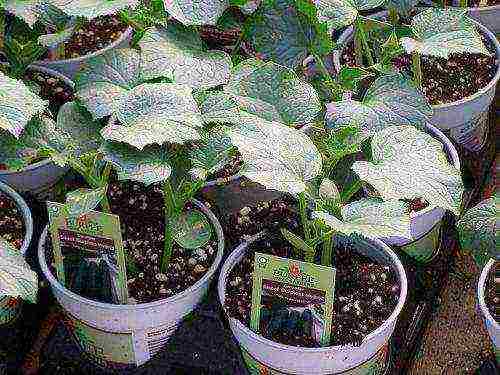
Before planting cucumber seedlings, the soil must be disinfected with potassium permanganate and sprinkled with phosphate fertilizer
You can plant seedlings in greenhouse soil 27-30 days after sowing. Immediately before planting, the sprout must be fertilized with a solution obtained by mixing 3 liters of water and 3 teaspoons of nitroammophoska or nitrophoska.
Cucumber shoots are planted in warm ground, previously watered with a weak solution of potassium permanganate and sprinkled with a teaspoon of any phosphate fertilizer. When planting between seedlings, it is necessary to maintain an interval of 30-35 cm. This distance is sufficient for the full growth of the cucumber root system.
Features of feeding various types of soil
Depleted or clayey soil can be fertilized with a mixture made from 5-6 kg of mullein, 30 g of superphosphate, 18 g of potassium-magnesia and 50 g of nitroammophoska, which can be replaced with 18 g of ammonium nitrate. All components of the fertilizer are thoroughly mixed and evenly applied to the planting area of 1 sq. m. Also, before planting cucumbers, 5 g of granular superphosphate are poured into each meter of the garden.
For full development on sandy loam soil, the cucumber sprout needs additional fertilizers in the form of magnesium, therefore, when planting seedlings and seeds on such soils, the soil is enriched with the appropriate organo-mineral mixtures.
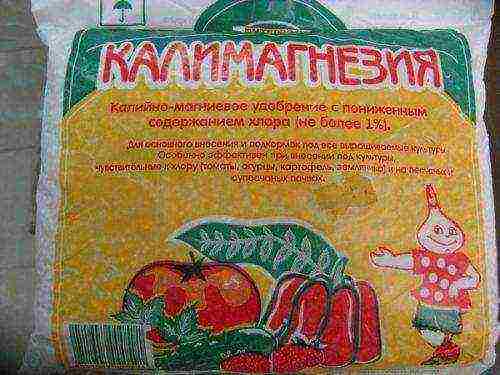
Kalimagnesia - fertilizer for clay and depleted soils
Important to remember
For planting cucumbers, it is better to choose slightly darkened garden plots. The soil allocated for planting this crop should be thoroughly fertilized and warmed up with a film.The seeds must be pre-soaked and disinfected in order to avoid the development of various diseases.
Remember, cucumbers "love" phosphate and nitrogen fertilizers, as well as abundant watering.
Subscribe Be aware of new products on our site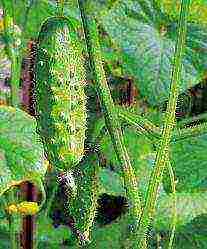
Fertilizers for cucumbers in the open field
Cucumbers grow well in fertile soil. On soddy-podzolic soils, they should be planted in the second year after abundant application of organic fertilizers to the soil. For a short growing season, the culture needs to form a powerful leaf apparatus and a large number of fruits.
It is not recommended to plant cucumbers over fresh manure because of the strong vegetation to the detriment of fruiting. Although fresh manure in the amount of 5-10 kg per 1 m2 can be applied under the predecessor or in the fall when digging the soil. Carbon dioxide, which is released during the decomposition of fresh manure, significantly improves the physical properties of the soil.
The main organic fertilizer for cucumbers can be considered semi-rotten manure, which is applied for spring digging of soil, in rows when sowing seeds or in holes when planting seedlings. For these purposes, you can also use waste greenhouse soil, compost mixture, humus soil or well-decomposed peat.
Of the entire norm of fertilizers laid down for cucumbers, two-thirds should be applied for digging, and the rest - together with pre-sowing loosening of the soil, in rows when sowing or in holes when planting seedlings, as well as in top dressing. In all cases, a complete mineral fertilizer is added to the organic fertilizer: 90 g of nitrophoska or 50 g of nitroammophoska.
Complete mineral fertilizer can be replaced with a mixture of simple fertilizers, taking 20 g of urea, double superphosphate or ammophos, 20 g of potassium sulfate or 30 g of potassium magnesium per 1 m2. On acidic soils, liming should be carried out (preferably under the previous crop) by adding 300-500 g of dolomite flour per 1 m2 of the plot.
You can add the following set of fertilizers for the culture: 3 kg of humus and peat, 2 kg of sawdust for loosening the soil, 30-40 g of superphosphate and 10-15 g of potassium salt per 1 m2 of plot. Fertilizers must be evenly distributed over the site and embedded in the soil to a depth of 20 cm by digging.
If, when sowing, granular superphosphate (5 g per 1 m2) is added to the rows, you can get an early harvest of cucumbers faster. Powdered superphosphate must be pre-mixed with humus. Potash fertilizers during spring soil cultivation can be replaced with wood ash at the rate of 150-200 g per 1 m2.
Cucumbers in central Russia are usually grown through seedlings, which are fed twice with mullein (1: 8) or chicken droppings (1: 10). The first time feeding with a liquid solution is carried out 2 weeks after germination.
The second top dressing is given 2 days before planting the seedlings, adding 15 g of ammonium nitrate and potassium sulfate and 20 g of superphosphate to 10 liters of mullein or poultry manure solution. Solution consumption is 1 glass for 2 plants.
After planting cucumbers in a permanent place in the ground, fertilizing needs to be carried out every 10-15 days, combining them with watering. Before flowering, cucumbers primarily require nitrogen to promote stem growth and leaf formation. For nitrogen feeding, 1 liter of mullein or 10 g of urea is dissolved in 10 liters of water.
At the beginning of flowering, when making a liquid fertilizing based on a mullein, micronutrient fertilizers are added to the solution (1 tablet per 1 liter of solution). You can also prepare an aqueous solution consisting of 10 liters of water, 0.5 g of boric acid, 0.4 g of manganese sulfate and 0.1 g of zinc sulfate.
During the period of mass flowering, cucumbers have an increased need for phosphorus and potassium, and on sandy loam soils they often lack magnesium. Therefore, from the moment the buds are formed and throughout the entire flowering period, it is necessary to increase the feeding of the plants, applying full fertilization.To do this, 40 g of superphosphate, 10 g of potassium sulfate or 20 g of potassium magnesium are added to 10 liters of mullein solution. Solution consumption is 200-250 ml per plant.
For top dressing, you can also use the following complex fertilizers: 25 g of nitroammofoska, "Stimul-1" or 30 g of a garden fertilizer mixture with microelements, but without chlorine, per 10 liters of mullein solution. Solution consumption is 1 liter for 4-5 plants. If there is no possibility to prepare a mullein-based fertilizer solution, the dose of mineral fertilizers should be increased by 1.5 times.
During the period of active fruiting and during its attenuation, cucumbers need nitrogen-potassium fertilizers. A good effect is given by top dressing with a soluble complex fertilizer (20 g per 1 m2), which is especially useful on light soils, where plants may lack magnesium.
If cloudy weather is established for a long time during the growing season of cucumbers, foliar top dressing with urea (20 g per 10 l of water) should be carried out.
To lengthen the fruiting period, phosphorus feeding will be required. Superphosphate can be applied before watering or rain, but is best done with irrigation water. With a sufficient supply of phosphorus to cucumbers, fertilizing with potassium nitrate, which does not contain chlorine that is bad for cucumbers, is useful. In the absence of a complex fertilizer, a mixture of simple fertilizers can be applied, diluting 10 g of urea and 10 g of potassium sulfate or 20 g of potassium sulfate in 10 liters of water and spending the resulting amount of fertilizer per 1 m2 of soil.
All watering of cucumbers can be combined with the introduction of wood ash - a supplier of potassium and calcium (from 40 to 100 g of ash per 10 liters of water). Ashes can also be fertilized after rain.
Feeding with weekly nettle infusion has a beneficial effect on cucumbers. The infusion must be diluted with water in a ratio of 1: 7 and water the plants every other day.
We recommend watching:
How to grow cucumber seedlings
Fertilizers for bell peppers
How is the lack of nutrients manifested in plants?
Fertilizers
A seedless way to grow cucumbers
No comments yet. Yours will be the first!
Cucumber is a tasty and healthy vegetable widely used in salads and preserves. It is classified as a rather capricious agricultural crops, therefore, obtaining a rich harvest requires compliance with several rules for choosing a place for planting and feeding them at various stages of cultivation. The introduction of fertilizers into the soil before planting cucumbers is the key to their rapid growth and active fruiting, therefore, it is worth paying special attention to the preliminary preparation of the soil in the garden allotted for them.

Fertilizing cucumbers before planting allows you to get excellent yields in the future
Autumn preparation for growing cucumbers in the open field
There are different opinions regarding the method of replenishing the land before planting seeds, and each summer resident independently chooses which technologies to use to fertilize the land before planting vegetables. Most gardeners are of the opinion that it is best to fertilize the soil in the area intended for growing cucumbers in the fall, since it will take several months and a large amount of moisture to completely dissolve the mineral mixture used to saturate the soil with nutrients.
Top dressing for cucumber seedlings grown by the open method is prepared taking into account the squaring of the plot, based on the calculation that for each square meter of future beds, 3-4 buckets of ripe manure, 3-4 glasses of wood ash and 80-100 g of nitrophoska are required. In autumn, the mixture is evenly applied to the area, which must be dug up in the spring and covered with a 15-centimeter layer of black soil.

Quail manure is applied to the garden in the fall
Spring preparation for growing cucumbers in the open field
If it was not possible to fertilize the soil in the fall, in the spring, at least a week before planting the seeds, in the place of the future cucumber bed, it is necessary to dig a groove about 40 cm deep, fill it with ripe manure, and cover it with a 16-centimeter layer of fertile soil on top, after which the soil must be leveled, form sides and cover with a thick film.
Only old manure can be added to the soil, since fresh mullein contains highly concentrated urea and nitrogen, which are capable of burning young cucumber sprouts. When fertilizing the soil, it is important to observe the proportions recommended by farmers, since an excessive amount of droppings on the site can provoke the formation of voids in cucumber fruits and a decrease in yield.
Fresh hay, fallen leaves or sawdust are excellent top dressing, which, when planting cucumbers, can replace manure and fully fertilize the earth. Any of these substances is introduced into the prepared groove, compacted and covered with fertile soil, on which it is already possible to form beds.
In cases where it is not possible to fertilize the soil in advance before sowing cucumbers, 3-4 days before planting the seeds, the soil must be sprinkled with ash mixed with superphosphate in the proportion: 2 tablespoons of fertilizer per 1 glass of ash, after which one bucket of humus is applied to the soil and rotten sawdust. Then the treated area is dug up and watered with 3-4 liters of humate solution prepared from 1 tbsp. tablespoons of this fertilizer concentrate and 10 liters. water. This amount of top dressing is enough to process 1 sq. meter of the garden. After all the manipulations, the soil is covered with a film to warm the earth.
In addition to feeding made by the gardeners themselves, ready-made complex fertilizers based on phosphorus and nitrogen, such as ammophos or diammophos, are also used. Due to their high mobility in the soil and easy solubility, phosphorus-nitrogen growth stimulants can be applied immediately before planting cucumbers.
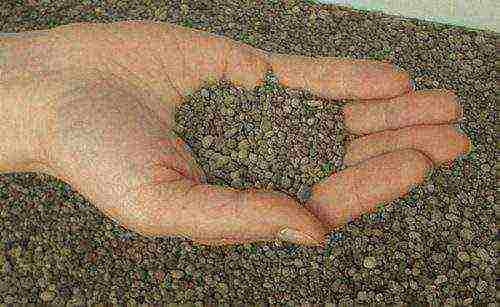
Diammophos is suitable for fertilizing cucumbers before planting
We plant cucumbers in the greenhouse
Most often, cucumber seedlings are planted in greenhouses, which have 4-5 true leaves. Usually, this number of leaves appears in the third week after the seeds are hatched. Growing seedlings includes:
- warming up the seeds;
- moisturizing and fertilizing cucumber seeds;
- cooling;
- introduction of seeds into pots.
Seeds intended for growing seedlings are kept for a month in a warm room at a temperature of at least + 25 ° C, which will allow in the future to get a friendly sprout, earlier fruiting and a minimum amount of barren flowers. Before germination, heated cucumber grains must be placed for an hour in a disinfecting solution made from 100 g of cool water and 30 g of garlic pulp.
After the destruction of pathogenic microbes, the seeds are folded for 12 hours in a tissue flap soaked in a nutrient solution, for the preparation of which you will need 1 tablespoon of water, 1 teaspoon of fine wood ash and the same amount of nitrophosphate.
Then the grains are placed on a damp cloth, where they are kept for 2 days at a temperature of about + 20 ° C. When the seeds are swollen and slightly hatched, they are transferred to the refrigerator for 24 hours. These manipulations allow you to harden future shoots. Note that the seeds of hybrid varieties of cucumbers do not need pre-sowing preparation.
For growing cucumber seedlings, use small containers 10-12 cm high, filled with a nutritious soil mixture. This substance is obtained from 1 part of rotten sawdust, 2 parts of humus and 2 parts of peat. 10 l of the preparation for the soil mixture is fertilized with 1.5 tablespoons of nitrophoska and 2 tablespoons of wood ash. Place 1 sprouted seed in 1 pea. Seedlings are watered at least once a week. The presence of intense lighting is a prerequisite for the normal growth of cucumber seedlings.
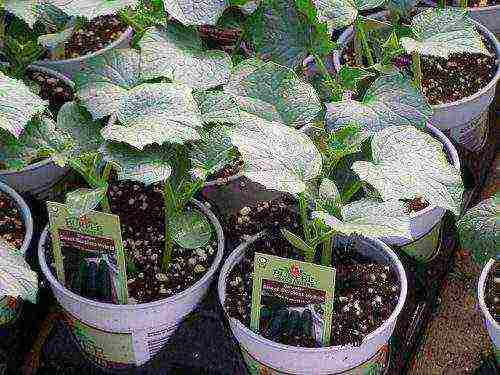
Before planting cucumber seedlings, the soil must be disinfected with potassium permanganate and sprinkled with phosphate fertilizer
You can plant seedlings in greenhouse soil 27-30 days after sowing. Immediately before planting, the sprout must be fertilized with a solution obtained by mixing 3 liters of water and 3 teaspoons of nitroammophoska or nitrophoska.
Cucumber shoots are planted in warm ground, previously watered with a weak solution of potassium permanganate and sprinkled with a teaspoon of any phosphate fertilizer. When planting between seedlings, it is necessary to maintain an interval of 30-35 cm. This distance is sufficient for the full growth of the cucumber root system.
Features of feeding various types of soil
You can fertilize depleted or clayey soil with a mixture made from 5-6 kg of mullein, 30 g of superphosphate, 18 g of potassium-magnesia and 50 g of nitroammophoska, which can be replaced with 18 g of ammonium nitrate. All components of the fertilizer are thoroughly mixed and evenly applied to the planting area of 1 sq. m. Also, before planting cucumbers, 5 g of granular superphosphate are poured into each meter of the garden.
For full development on sandy loam soil, the cucumber sprout needs additional fertilizers in the form of magnesium, therefore, when planting seedlings and seeds on such soils, the soil is enriched with the appropriate organo-mineral mixtures.

Kalimagnesia - fertilizer for clay and depleted soils
Important to remember
For planting cucumbers, it is better to choose slightly darkened household plots. The soil allocated for planting this crop should be thoroughly fertilized and warmed up with a film. The seeds must be pre-soaked and disinfected in order to avoid the development of various diseases.
Remember, cucumbers "love" phosphate and nitrogen fertilizers, as well as abundant watering.
Record What fertilizers should be applied when planting cucumbers? SeloMoe first appeared.
As it grows, any garden crop must be fed with nutrients. This is especially true for cucumbers cultivated in an open garden. Regular nutrition will help plants to withstand diseases and the vagaries of the weather. In the article, we will look at how the fertilization of cucumbers in the open field goes, what nutritional methods and stages exist.
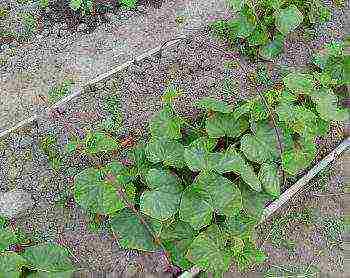
With proper nutrition, cucumbers do well in the open garden.
Stages of fertilizing for cucumbers at their summer cottage
Fertilizers for cucumbers grown in an open garden are applied in several stages.
- Laying organic fertilizers for the winter. The soil for spring planting of cucumbers is prepared in the fall. The allotted beds are dug up with manure, peat, humus or any available organic matter (kitchen waste, fallen leaves, potato peelings, vegetable tops).
- Mineral fertilization of the beds 2-3 weeks before planting seedlings or planting seeds. Apply complex fertilizers containing nitrogen, phosphorus and potassium. 1 m² of soil requires about 10 g of nitrogen, 10-15 g of phosphorus and potassium.
- Top dressing of seedlings. Young plants are fertilized three times with a mixture of superphosphate, ammonium nitrate and mullein, starting in the phase of the first leaf, the second time when the next true leaf appears, and the third time two weeks after the previous one.
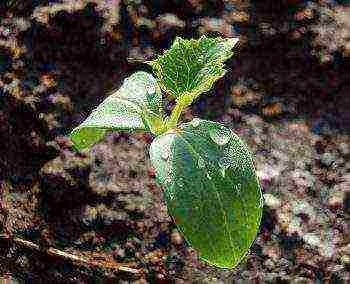
Top dressing begins with the formation of the first leaf
- When transplanting seedlings to a permanent place, a mixture of superphosphate, potassium chloride and ammonium nitrate is introduced into the wells. After rooting, the cucumbers are fertilized with a mullein solution.
- Fertilizing cucumbers during the growing season. Cucumbers need nitrogen, calcium and phosphorus to grow and form shoots. Plants require nitrogen, magnesium and potassium to form fruit. During this period, cucumbers are fed every 2-3 weeks.
Types of dressings for cucumbers
Apart from the preliminary fertilization of the soil, top dressing of cucumbers can be divided into root and foliar.
Root feeding of cucumbers, as the name suggests, is done by injecting nutrient mixtures directly into the root system. This does not mean that you need to pour fertilizer directly onto the roots, digging holes. It is good enough to shed the soil around the plant, being careful not to touch the green mass in order to avoid chemical burns of the whips and leaves.
Foliar dressing, on the contrary, implies the application of nutrients directly to the tops, and, if necessary, to the ovary and even to the fruit. Such feeding is carried out by irrigation or spraying. The nutrient solution for her should be less concentrated than for root watering.
Fertilizing cucumbers with mineral fertilizers
To determine what fertilizers are needed for cucumbers, periodic inspection of the plants will help.If the leaves have faded, the cucumber whips have wilted, then the plants urgently need food. Typical signs indicating the need for feeding:
- Cessation of growth, bluish tinge of young leaves indicates a lack of phosphorus.
- Pale color of fruits and leaves, shortened and thickened fruits are symptoms of nitrogen deficiency.
- Slow growth, pear-shaped cucumbers, light border around the edge of the leaves indicate a potassium deficiency.
- A powerful increase in green mass and slow development of ovaries are a sign of an excess of nitrogen.
The recommended fertilization doses for cucumbers are given in the table, in g per 10 l of water:
| Feeding time | Potassium sulfate | Superphosphate | Ammonium nitrate |
| Before fruiting | 10 | 20 | 5–10 |
| With the formation of ovaries and ripening of cucumbers | 20 | 20 | 15–20 |
Tip # 1: The feeding solution should be warm because cucumbers are very sensitive to cold. It is better to use hot water for mixing fertilizers. During the preparation process, the liquid will cool down to a temperature comfortable for the plant.
Organic fertilization
The most effective organic fertilizer for open cucumber beds is cow dung. The nutrients it contains provide complete nutrition, eliminating the need for additional fertilizers. Manure is brought in rotted form at the rate of 3-4 buckets per m² or used for irrigation in the form of a water infusion. To prepare a mullein, take 1 part of fresh manure to 10 parts of water. Cucumbers are fed at the rate of 1 liter of the finished product per plant.
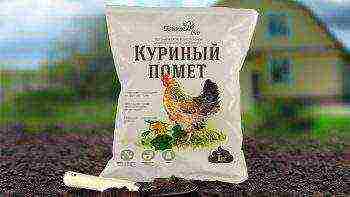
Chicken manure is sold dry at all gardening stores
Cow dung can be replaced with chicken dung. The concentration of active substances in it is much higher, therefore, before watering, chicken manure is diluted with water in proportions of 1:20. The dose is the same - 1 liter. for 1 plant.
Non-standard ways of feeding cucumbers
Old proven methods of feeding cucumbers using natural fertilizers and using improvised means are very popular among gardeners.
- Irrigation with milk whey. This is not only an effective fertilizer for fruits, but also a completely safe means of combating powdery mildew. Lactic acid bacteria inhibit the growth of "competitors" without harming the plant. The whey obtained from the preparation of cottage cheese is poured into a spray bottle and sprayed on the aerial part of the plants. Diluted kefir, sour milk or yogurt (2 liters per bucket of water) are used with the same success.
- Processing with onion peel infusion. Take a glass of raw materials for 8 liters of water, bring to a boil, and then insist for 3 hours. Plant leaves are irrigated for foliar feeding and disease prevention.
- Top dressing with an aqueous solution of ash. It is enough to take a glass of ash for a bucket of water. The resulting composition is watered plants at the root. Such processing is allowed to be carried out weekly throughout the growing season of cucumbers.
- Presowing treatment of seeds with soda.Before planting, cucumber seeds are soaked in a 1% solution of soda for a day, washed with running water and dried.This simple procedure increases seed germination by 10% and significantly increases yields.
- Spraying tops with infusion of rotten hay. Such feeding prolongs the growing season of cucumbers and protects the lashes from being damaged by powdery mildew. The hay is soaked in a 1: 1 ratio and left for two to three days. The resulting product is sprayed with plants 3 times with an interval of 7-8 days.
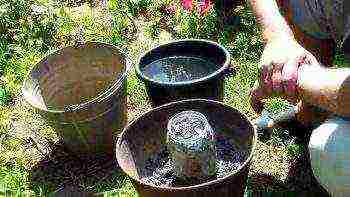
Ashes for cucumbers can be applied both dry and as an aqueous solution
Yeast top dressing: recommendations for gardeners
Yeast as fertilizer for open field cucumbers has been used by gardeners not so long ago. This method is often perceived as something exotic, nevertheless, the results of yeast feeding are impressive. Cucumbers get sick, grow faster, the fruiting period begins 2 weeks earlier, the plants tolerate heat and cold precipitation well. Yeast contains B vitamins, proteins, amino acids, organic iron, trace elements.
- increases the resistance of plants to diseases and weather anomalies;
- activates the rooting of seedlings;
- stimulates the development of the root system, increasing the number of lateral roots by 10 times;
- increases soil fertility, enriching it with phosphorus and nitrogen;
- creates a prerequisite for active reproduction in the soil of microorganisms that decompose organic matter and improve the composition of the soil.
Another plus is significant savings on fertilizers.
For feeding, take briquetted or dry (necessarily not expired) yeast. The methods for preparing the infusion are shown in the table:
|
Recipe # # |
Ingredients | Infusion period |
Method of application |
| 200 g dry yeast and a teaspoon of sugar in 1 liter of slightly warmed water | 2 hours | Dilute with water to 10 liters and water the plants under the root | |
| 600 g live briquetted yeast in a bucket of warm water | 24 hours | Diluted with water 1: 5, used for root feeding when transplanting seedlings | |
| 500 g fresh yeast, 500 g chopped nettle in a bucket of warm water. | 48 hours | Diluted in 50 liters of water, used for irrigation and foliar feeding |
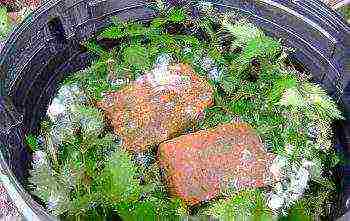
An effective complex fertilizer is obtained from nettle with yeast
Tip # 2: Yeast enriches the soil with nitrogen, but the fermentation process depletes the reserves of potassium and calcium. In this regard, yeast feeding is used no more than three times, accompanied by the introduction of ash, mineral fertilizers or extracts from eggshells.
The main mistakes of gardeners
- Excessive feeding of cucumbers with urea.
Urea is a powerful fertilizer for any garden crops, the concentration of active substances in it is very high. Therefore, the recommended dosage should be followed exactly - no more than 50 g per bucket of settled water. If you overfeed the cucumbers with a urea solution, then you can completely lose the crop. Do not water a cucumber patch with urea in hot weather in bright sun. It is better to do this in the evening, preferably before the rain. If the weather is dry, the soil should be watered abundantly before feeding.
- Horse manure as fertilizer.
Fresh horse manure for cucumbers must not be applied! It contains a lot of ammonia, which is converted into nitrates in the soil. Cucumbers grown in such a garden become hazardous to health.
- Frequent spraying of cucumberssoda solution.
For the correct use of baking soda in the garden, you need to know the proportions of dilution, dosage, and observe the intervals for processing plants. Excessive use of soda leads to a concentration of sodium bicarbonate in the soil. This negatively affects the presentation of the cucumbers and the intensity of fruiting. A saturated soda solution can completely ruin the plant.
- Fertilization of cucumbers with potassium chloride during the growing season.
Potash fertilizers are essential for the normal development of plants. However, cucumbers cannot tolerate the chlorine found in many nutritional mixes.To minimize the risk of plant damage, potassium chloride is added during the autumn digging of the garden. By the spring, all chlorine is neutralized by the influence of snow and rain, only potassium necessary for plants will remain in the soil.

Potash fertilizers help plants withstand the cold
The optimal source of potassium for an unprotected cucumber patch is potassium sulfate, otherwise - potassium sulfate. It is a highly soluble crystalline powder of grayish color. The main thing is that there is no chlorine in it, so it can be applied regardless of the growing season.
Answers to topical questions of gardeners
Question number 1: With sufficient watering, cucumber whips wither, the leaves lose their turgor and sag. Additional soil moisture does not help. What is the reason?
There are signs of potassium deficiency. With increased potash hunger, light green spots will appear on the leaves, which will soon acquire a brown tint, similar to a burn mark. It is recommended to feed the cucumbers with potassium sulfate, potassium nitrate, potassium magnesium, and kalimag. It is permissible to use any complex fertilizer that contains potassium - nitrophoska, nitroammofosk, carboammofosk. The method of application and dosage are indicated on the package.
Question number 2: What type of feeding (root or foliar) is more effective with an open method of growing cucumbers?
Root dressing is good in hot weather. If summers are warm, the root system of plants is sufficiently developed to respond to root fertilization. In cold and cloudy weather, plants are fed by spraying the leaves with nutrient solutions.
Question # 3: What is green manure? Can they be applied to cucumbers?
Siderata are predecessor plants, the green mass of which is used as an organic fertilizer for a sub-crop. White mustard, oats, rye, oil radish can be used as green manure fertilizers for cucumbers. These crops are sown on beds vacated after harvest. In autumn or spring, they are dug up together with brilliant green.
Question number 4: Despite the observance of all the terms of feeding, the cucumbers stopped in development. What is the reason?
This is how plants react to a lack of boron. Uogurtsov stops growing point. It is recommended to add 2 g of boric acid to each bucket with a solution at the first feeding.
Question # 5: Why doesn't fertilization give the desired effect?
It depends on the composition of the soil. In order for the plants to absorb the nutrients as much as possible, the soil must be neutral. Before applying fertilizers, acidic soils are treated with lime, ash, dolomite flour, and chalk.
Rate the quality of the article. We want to be better for you:


